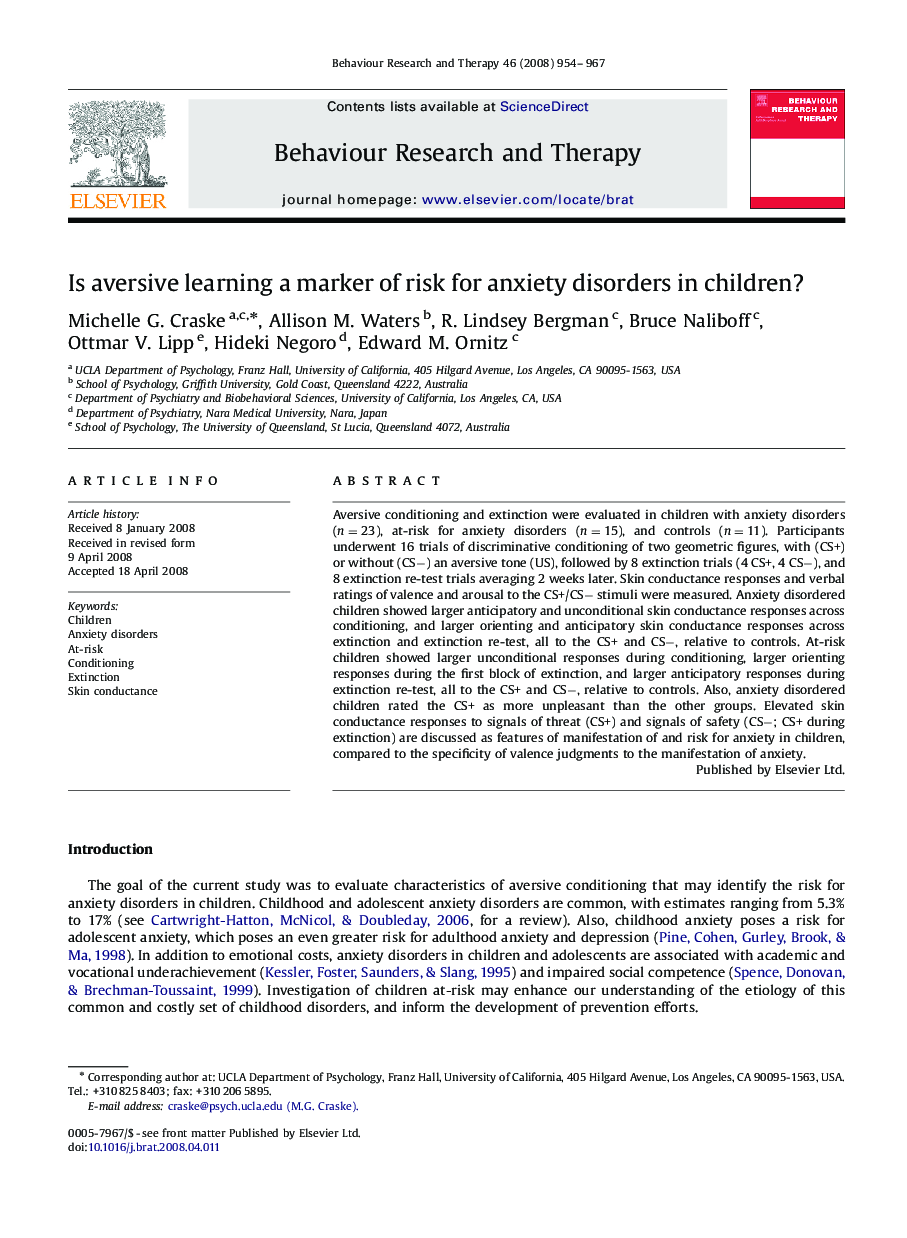| Article ID | Journal | Published Year | Pages | File Type |
|---|---|---|---|---|
| 902199 | Behaviour Research and Therapy | 2008 | 14 Pages |
Aversive conditioning and extinction were evaluated in children with anxiety disorders (n=23), at-risk for anxiety disorders (n=15), and controls (n=11). Participants underwent 16 trials of discriminative conditioning of two geometric figures, with (CS+) or without (CS−) an aversive tone (US), followed by 8 extinction trials (4 CS+, 4 CS−), and 8 extinction re-test trials averaging 2 weeks later. Skin conductance responses and verbal ratings of valence and arousal to the CS+/CS− stimuli were measured. Anxiety disordered children showed larger anticipatory and unconditional skin conductance responses across conditioning, and larger orienting and anticipatory skin conductance responses across extinction and extinction re-test, all to the CS+ and CS−, relative to controls. At-risk children showed larger unconditional responses during conditioning, larger orienting responses during the first block of extinction, and larger anticipatory responses during extinction re-test, all to the CS+ and CS−, relative to controls. Also, anxiety disordered children rated the CS+ as more unpleasant than the other groups. Elevated skin conductance responses to signals of threat (CS+) and signals of safety (CS−; CS+ during extinction) are discussed as features of manifestation of and risk for anxiety in children, compared to the specificity of valence judgments to the manifestation of anxiety.
